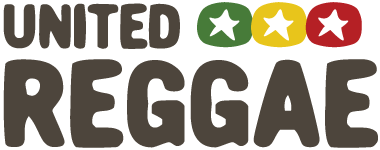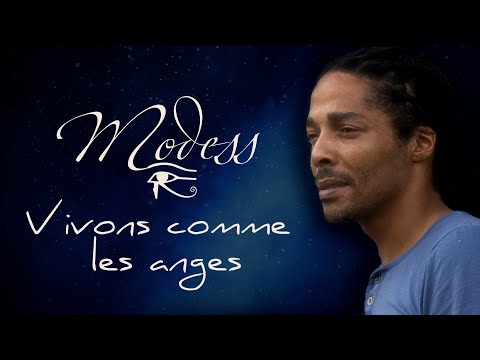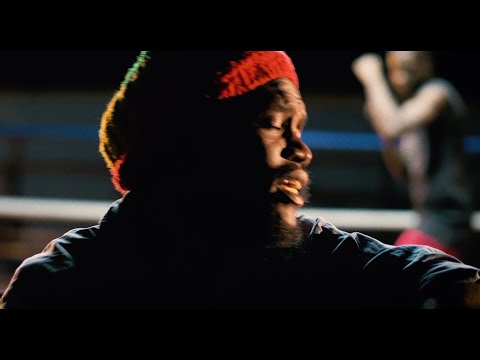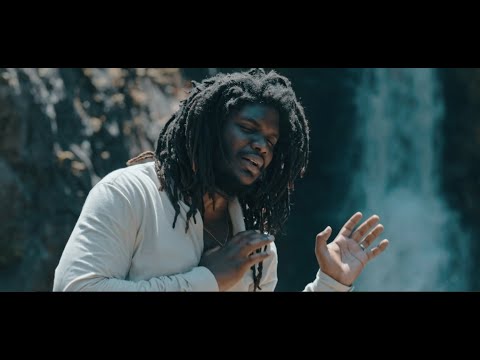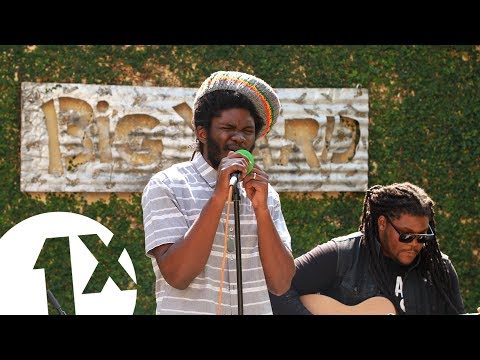Articles about reggae music, reviews, interviews, reports and more...
Interview: Franklyn Irving talks Channel One
- Home
- Articles
- Interviews
- Interview: Franklyn Irving talks Channel One

Interview: Franklyn Irving talks Channel One
"Channel One was a team. A team of all sorts of man"
Sampler
To younger readers, Franklyn “Ben Up” Irving is the producer of Jah9’s Steamers A Bubble – an ode to guitarist Earl Chinna Smith’s yard, where both are known to commune. But a quarter century before, Irving was part of the original team at the legendary Channel One studios on Maxfield Avenue – where some of greatest reggae music of the 1970s and early 80s was made.
Today, as Irving himself points out, he is among the last surviving staff members, making him a crucial person to interview about Channel One. He has a first-hand insight into the people that entered and the sounds that left the now-disused hit factory, which closed during the digital era. Starting as a jukebox supervisor in 1972, he was taken under the wing of Channel One’s owners, the Hoo Kim brothers. Following a stint as a professional cyclist, he eventually tried producing in 1982, cutting the Apartment rhythm with the Roots Radics, which he would later revive, having restarted his music career, for Steamers A Bubble.
Sometimes, interviews can be planned painstakingly in advance. At others, a chance meeting requires discussion without prior research. United Reggae ran into Ben Up at Mark Wonder’s house in Kingston last February and conducted this interview minus pre-prepared questions. Though we’d love the opportunity to talk to him again in more depth, he still had some interesting things to say.
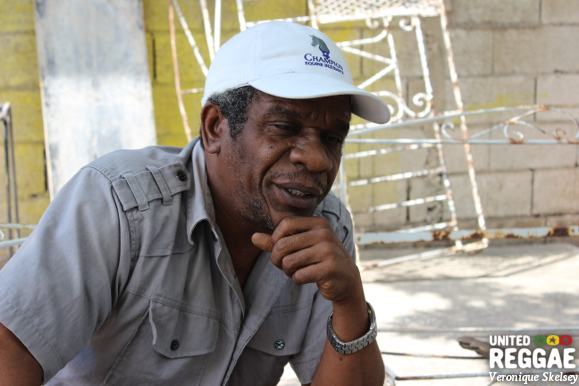
How did you get into music?
My first experience with music was when I was around 12 years old when Channel One studio opened on my road. I lived on Swettenham Road and Channel One was on 29 Maxfield Avenue, on the corner of Maxfield Avenue and Swettenham Road. So from 12 years old – as young as I was – I ended up being a part of Channel One. It was Joseph Hoo Kim who named me “Ben Up” because I have double joints in my hands so I became Ben Up and part of the family. Because I came from a big family of 11 children with my mum alone carrying us, I ended up being loved by the Chinese. Joseph Hoo Kim’s mother adopted me so I came to live in Norbrook with them. I would come down in the day time to school and then go back up with them.
 Joseph Hoo Kim named me "Ben Up" because I have double joints in my hands
Joseph Hoo Kim named me "Ben Up" because I have double joints in my hands
What were your earliest duties at Channel One?
Personally, it was the jukebox that I was a part of dealing with growing up. Channel One was really created out of jukeboxes because Joseph Hoo Kim used to own jukeboxes so we used to buy records. I did the jukeboxes mainly because I would go into the studio, sit there, try the piano, try the drum and the engineering but it couldn’t work! So I went to the money part of it because with the jukebox you were sure of getting money every month. But secondly, when I grew up, I was like Jo Jo’s bodyguard. Everywhere Joseph would go I would be in the car with him.
What year did you first start going to 29 Maxfield Avenue?
1972. When it first started. From when Channel One was created I was there. In the engineer room, the engineer had the board on a platform, like a ramp made out of board, solid ply. I was the one at 12 years old who packed Channel One’s engineer room by putting sand under the platform. That was before the studio even opened. Then the studio opened in 1972 so fortunately I saw everything that happened after that. Striker Lee was the first one who came in to try it out. Bunny Lee got in there to try it and Soul Syndicate was the first band that played in there. It was a session. It was Stranger and Gladdy but I don’t remember the name of the songs. [possibly Don’t Give Up The Fight].
Bunny Lee’s thing started getting big around that time but a few years later Channel One took it back from him and became a production centre rather than just a place for other producers to record.
When Channel One started it was Syd Bucknor as Channel One’s engineer, who came from Studio 1. So he did a song named Stand Firm [by the Tidals]. Jo Jo wasn’t the producer but he funded it. It was Mellow, Mr Williams, was the studio manager when they first started and they found out that Sydney was good at balancing. But there were so many things on Channel One’s board that Sydney didn’t touch so that’s how Ernie – the smaller brother of Joseph - Ernest Hoo Kim came in. The API board came with a big black book. Anyone, he would give that book to. Because that’s the reason why Channel One had that sound and no one can get it back.
None of Channel One’s engineers were formally trained. Ernest Hoo Kim was a jukebox and jack part technician. Maxie was a technician that built Channel One’s amplifiers. Bunny Tom Tom was a bike fixer. Souljie was a solider. Barnabas was a youth like us who grew in the area who would sit around Sly and the engineer room until he became an engineer. What created that sound was the team. Channel One was a team. A team of all sorts of man. You had man who were mechanics, some who did upholstering work but they grew it up because originally the place was Cool Paris – that was the name of 29 Maxfield Avenue. It was an ice cream parlour called Cool Paris before it became Channel One. So with that team coming Ernest realised there was half of the board that Sydney did not touch so he started to touch them! And because Jo owns the studio they can spend a whole day on one song. So the magic came from that.
 None of Channel One's engineers were formally trained
None of Channel One's engineers were formally trained
When did the Channel One team first come into its own?
When it really kicked off was on a Sunday. It was Skin Flesh and Bones band – Sly, Ranchie, Dougie, Ansell Collins and Sticky. Ranchie was supposed to play the rhythm guitar and Dougie play the lead. So it was Lloyd Parks that should have been the bass man that Sunday when It’s A Shame and Have Mercy tracks were being laid. But Lloyd Parks didn’t turn up and Jo Jo had the rice and peas all cooked and everything so Jo Jo said “It not going to cancel today. It haffi happen”. So immediately it was Ranchie who was the man who he told to play the bass and Dougie would play the rhythm guitar. That’s where and how that magic kicked off from that Sunday. Ranchie played the bass and after that we didn’t even need Lloyd to do an overdub or anything. The magic started in 1973.
Can you remember when the Diamonds first came down there?
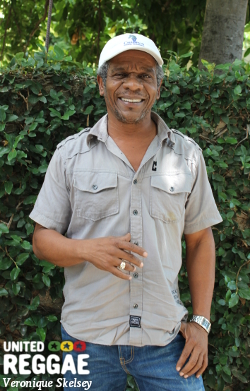 Yeah, the Diamonds first came down there in 1973. They came as the Diamonds and they did some songs at Studio 1. They brought a four track tape with some songs on it that they recorded at Studio 1 but it was never released. That’s how we got Have Mercy and I Need A Roof. After they did those songs, that’s when Jo Jo named them and put “The Mighty” upon them. Some of the Diamonds like Bunny were living on Maxfield Avenue so it was easy for them to come down. Because what really happened was 80% of Studio 1 and Treasure Isle singers as well as Dynamic and Harry J studio – all those people that were singing before in the 60s and early 70s – they all came to Channel One. They were complaining that they didn’t get enough money at Coxsone so they just came and did back over everything.
Yeah, the Diamonds first came down there in 1973. They came as the Diamonds and they did some songs at Studio 1. They brought a four track tape with some songs on it that they recorded at Studio 1 but it was never released. That’s how we got Have Mercy and I Need A Roof. After they did those songs, that’s when Jo Jo named them and put “The Mighty” upon them. Some of the Diamonds like Bunny were living on Maxfield Avenue so it was easy for them to come down. Because what really happened was 80% of Studio 1 and Treasure Isle singers as well as Dynamic and Harry J studio – all those people that were singing before in the 60s and early 70s – they all came to Channel One. They were complaining that they didn’t get enough money at Coxsone so they just came and did back over everything.
There was a lot of licking over of Coxsone’s rhythms at Channel One.
Alright, that was something that happened, really, because of the artists. Alton came, Delroy came, the Diamonds came, Heptones came, Leroy Smart and everyone came. The songs, if you realise, those songs, they might feature Jackie Mittoo on the piano or possibly Leroy on bass, but you weren’t hearing the drums – there wasn’t any clarity with all the instruments. So you’d have a jumbled up thing and a weak thing. So they realised that if Channel One did over It’s A Shame, Call On Me and Roof Over My Head they started to notice that you could hear every instrument’s sound with no problem. And the drum sound on the drum and bass was just out of mind! So the artists they would come and they wanted to do over those songs. Jo Jo didn’t tell them to do that. They wanted to.
So you’re saying because the old Studio 1 songs were recorded in two track and Channel One had four track the artists wanted to do their songs again?
Yeah it was two track and then we came with four. So after that they started to do over the songs.
Before Channel One’s sound really took over the island, one of the earlier hits was an original song voiced by Junior Byles, Fade Away in 1975.
But that was not Channel One’s song you know? It was Earl Chinna Smith’s song. One Sunday after they did some recording, Chinna asked Jo Jo to do two songs – Fade Away and the next rhythm I don’t remember. They voiced it there and after that he gave the song to Channel One to release. He only ended up actually getting it back when he asked for it back a couple of years ago. So it wasn’t really Joseph Hoo Kim who produced that song, it was Earl Chinna Smith who wrote it and produced it and played it with his band Soul Syndicate.
 Horsemouth was one of the drummers everyone was afraid of
Horsemouth was one of the drummers everyone was afraid of
There seems to be some differing information circulating as to who played drums on the big hits coming out of Channel One by the Diamonds and others – was it Sly, Horsemouth or both?
Sly played the drums on those songs. Listen now, I cannot remember Joseph Hoo Kim having Horsemouth play on a Channel One rhythm. Because, with no disrespect of Horsemouth, Horsemouth was one of the drummers that everyone was afraid of, because even if you don’t book him on the session you would have to pay for when he didn’t play because he was a problem. He would always come and wanted to play and boasted himself. He was an excellent drummer but at that time in the 70s at Channel One it was Sly and Santa Davis. Because Soul Syndicate played on a lot of Channel One songs and then the Radics came in at the last part. But I can only recall that I saw Horsemouth play there with other musicians like when Jack Ruby would come and book the studio. So Horsemouth cannot claim that. He claimed that Jo Jo made him do some overdubs but I don’t remember that in all of my life. I don’t know if I’m wrong? But in all those times it was Sly and Santa were the drummers for Channel One studio.
As Channel One’s reputation grew some of the great producers of the late 70s and early 80s started coming there. Tell me about how Junjo Lawes starting coming in and how he recorded the first Barrington Levy album.
Well Barrington Levy, like most of the young singers came there and Dillinger did some songs with him. But Junjo’s thing was created out of him coming from being Dillinger’s bodyguard. Dillinger was the biggest thing out of Two Mile so he started to come with man like Junjo who was a rough man or a badman as you’d call him. So he started to come with Dillinger and then after that he started to love the business and started to produce. So he came in with Barrington Levy’s first song. Because that song “On my way up to Marverly, Mama said to buy collie” it was at Norman Manley school that Barrington Levy sang that song where Junjo heard him and started to record. Souljie was his engineer. But he was fortunate because he got the chemistry. Because a lot of people used Channel One studio but their songs were still not close to Channel One productions. But Junjo was fortunate to get a part of the chemistry because Souljie was the least of the apostles - or the engineers -and he got the opportunity to work with Junjo and so he did some of the things and got that sound.
Linval Thompson also used to come down to Channel One in the late 70s and produced some good tunes.
Linval did some good tunes and Junjo too. But Linval was an independent youth who started so what happened was, he did a lot of productions for himself. Him and Junjo and Tony Welch and one or two artists there. But he was mainly a man who was doing his productions when he came in. At that early age within the 70s Linval had things. When most of the artists were singing and struggling Linval had a Mercedes Benz and all those things. He did some great productions because most of his work was Channel One where he did his production. He did all those songs and got Revolutionaries to play them.
 When most artists were singing and struggling Linval had a Mercedes Benz
When most artists were singing and struggling Linval had a Mercedes Benz
So it was the Revolutionaries and not the Radics who played on Linval’s productions?
The Revolutionaries really played them. The Radics ended up playing some but the first things for Junjo and Linval – the Revolutionaries played those songs.
So how did you get into production?
How I started to produce was one of the most amazing things. Because I was there all the time and it was actually a woman, a girl that I used to talk to, ended up making I be a producer. I was a cyclist that would ride at the National Stadium, I used to ride for the Jamaica Professional Cycling Association. So I met this girl while I was a cyclist at the stadium and used to talk to her. She used to live at Chisholm Avenue and then in 1982 she moved and came down to Maxfield Avenue. I found out she lived there and went to look for her. Because I hadn’t seen her for six months, when I looked for her, her boyfriend was now O’Neill Dyer a little young youth who lived next door who was singing.
So I started talking to her and she was telling me it was a long time she didn’t see me and how her boyfriend next door is a singer. Because she knew I was always within Channel One, she asked me if I would listen to him. So listened to him because, quietly, this was the only way I could be back friends with her! I listened to this youth O’Neill Dyer and he was trying to sing like Dennis Brown. I told him he was not too bad because he had a lot of songs so it came into my head that I was going to record this young man.
The next two weeks we linked up with Roots Radics which was Style Rotodom, Flabba Holt, Steelie and Bingy Bunny and I told them I had a little new artist I wanted to do something with. They said “No problem Ben Up, set the date” and we did two tracks with them in 1982. It was the song named Robbery which was released in ’82 on Channel One’s Hitbound label and then we did the next song named Apartment. The song Apartment ended up being Steamers A Bubble on the Inna De Yard rhythm. But that song didn’t release because it wouldn’t reach the bridging post. He was singing off key and it took a lot of time and it was creating things so we had to rest that. I put that Apartment rhythm down in 1982 until 2009 when it rose back. So I recorded the song Robbery and Channel One released it. I also gave Cha Cha – you know that record label Cha Cha?
 I put the Apartment rhythm down in 1982 until 2009 when it rose back
I put the Apartment rhythm down in 1982 until 2009 when it rose back
Yes, from Harlesden.
I gave it to Cha Cha to distribute in England and Europe. I heard from Cha Cha one time saying the song released. When Cha Cha released it, it must have gone over 150 copies. And to be frank with you that was the last time I heard from Cha Cha. Because it in the first month it sold 800 copies in Jamaica within Channel One and I got some money but then I realised I didn’t get any more money from anything. So after I didn’t get any money from Cha Cha – I was done with the music as a producer. I just put down the tape and had done with it and stayed with the jukebox thing and then the poker thing. The poker thing was a game shop where people could come in and have a non-alcohol drink and play games, including race horse and eight line. The poker thing came in until 2009.
Since you mentioned Dennis Brown Hitbound and Cha Cha, I wanted to ask you off the top of my head about one of my favourite records – Stephanie Samuels singing Africa We Want To Go.
Great song. I knew her personally. Stephanie Samuels was a Trenchie. She sang that as a schoolgirl. She went to Trench Town Comprehensive High School. She was two years older than me and I ended up like I wanted that girl more than anything else! But being two years younger and in Jamaica you’re like a little boy! But I remember she voiced that as a schoolgirl. A nice girl. She did a next song and then she ended up going away to the States and I don’t know what became of her. We helped support her to get recorded because she was this little young schoolgirl coming here – because Trench Town school is like a block away.
History books suggest that it was the digital thing that made Channel One close down. Is that true?
It wasn’t really the digital. To be frank with you, it was after 1977. Channel One studio and the whole family was four brothers – Joseph Hoo Kim, Paul Hoo Kim, Kenneth Hoo Kim and Ernest Hoo Kim. Paul Hoo Kim was the vibes man. He was the one that had the sound and the bike shop. In 1977 he got killed down in Greenwich Farm. He was playing domino on the beach and some man killed him. To frank with you from that time it was a serious part, a big blow to Channel One music. Even if you listen to the songs from there. Channel One did a lot of rhythms because the musicians would come the whole week and sometimes Channel One would work for days. The main songs were from 1973 to 1977 when the love was there. After 1977 when Jo Jo’s brother died it wasn’t like that. We started to do things but it was just to carry through the thing. The love in the thing wasn’t really fully in effect.
 The main songs were from 1973 to 1977 when the love was there. After 1977 when Jo Jo's brother died it wasn't like that
The main songs were from 1973 to 1977 when the love was there. After 1977 when Jo Jo's brother died it wasn't like that
It wasn’t the digital thing – just that Jo Jo took the business and started to do his thing in New York and had other people like his next brother starting to do the producing. Sometimes he would come in and go and come. Because it took Jo Jo two years to build a record shop in Brooklyn. So he actually ended up running it in Brooklyn and started to leave Kenneth and my brother Christopher Irving and some other man doing the business within that time. And because Herbman Hustlin’ with Sugar Minott was at Channel One and had that digital sound and digital bass with Sly playing on the digital drum even before Jammys with Sleng Teng. So it wasn’t anything to do with digital – it’s just that most people don’t know that once Paul Hoo Kim was dead it was like the whole seriousness of Channel One. We didn’t know what was the cause of that and in our heads we wondered “Who next?” So that took the real genuine thing from Channel One.
So how did you get back into producing and make Steamers A Bubble with Jah9?
Me and Earl Chinna Smith are friends since years, because Kyso Henricks – who was the cook for Jimmy Cliff, Peter Tosh – him and Chinna grew in the same area of Kingston 13. So in 2009 I actually started to spend more time Inna De Yard with Chinna. One day Chinna just looked upon me and said “Ben Up – what was the riddim you do at Channel One? Where them there?” I said “I still have them upon tape”. He said “Wha? You haffi rise back them riddim there man”.
So I got to take the tunes off the four track tape from the analogue to ProTools, bring the rhythms and start to play them Inna De Yard. Paketo listened to the rhythm and one day just came to me and begged me saying “Ben Up, let me voice upon one of them riddim there” when he was Inna De Yard with Chinna and them. So I said “Alright” and gave him the rhythm. Then one evening Derajah heard us voicing on it and he came in on it and we just voiced that one. Then we voiced Addis Pablo and then a couple of months after, Jah9. Because I was doing the Best Of The Apartment Rhythm – that was the whole idea of doing an album with that rhythm with singers.
So Jah9 was there one day and we asked her if she wanted to go upon that rhythm and she said “OK” so me and Addis Pablo recorded her in the studio. From when she opened her mouth on the rhythm and said “Inna De Yard, Music A Bubble, Steamers A Bubble” and I spun and looked at Addis Pablo and we laughed. Because from when she started that, I knew it was just an amazing song because she started to say some things that most people weren’t saying. So that’s how we started the project there Inna De Yard and it kicked off back in 2009.
Finally, what’s coming next from your productions?
My 2015 releases are Jesse Royal’s Just Can’t Leave It Alone on the What rhythm, Micah Shemaiah’s Lemonade Days and Infinite’s Country Bus and Special Request on the Robbery rhythm, Legal by Micah Shemaiah and Rassy Hardnocks on the Badboy rhythm, Mark Wonder’s Pack Up Your Trouble – which is not out yet - and Jahmelia’s Saint Andrew Park on the Apartment rhythm. Also Exile Di Brave and Addis Pablo have some new songs. I have some crazy things right now. These rhythms – I have one named What, one named Robbery, and one named Badboy which the original Gladiators played on 1975 at Channel One. This year you’re going to hear some rhythms.
 This year you're going to hear some rhythms
This year you're going to hear some rhythms
Have you built any rhythms from scratch or are they all played by the Radics or the Gladiators?
I’ve built two new rhythms recently. The What rhythm is a new rhythm and there is a next one. But these rhythms that I’m coming out with, it’s like they are from scratch because the only artists that voiced on them [before] are Frankie Jones and a youth named Steve Knight. Those artists weren’t so popular that the rhythm built off those persons. So these rhythms that are coming now, anyone that I release first on it, it’s like it is him it’s made for. Most people don’t know these rhythms so they will have something to take back the thing to a different level.
Comments actually desactivated due to too much spams
Browse by categories
Recommended Articles
Latest articles
Recently addedView all
© 2007-2025 United Reggae. All Rights Reserved. Reproduction in whole or in part is prohibited. Read about copyright
Terms of use | About us | Contact us | Authors | Newsletter | A-Z
